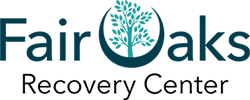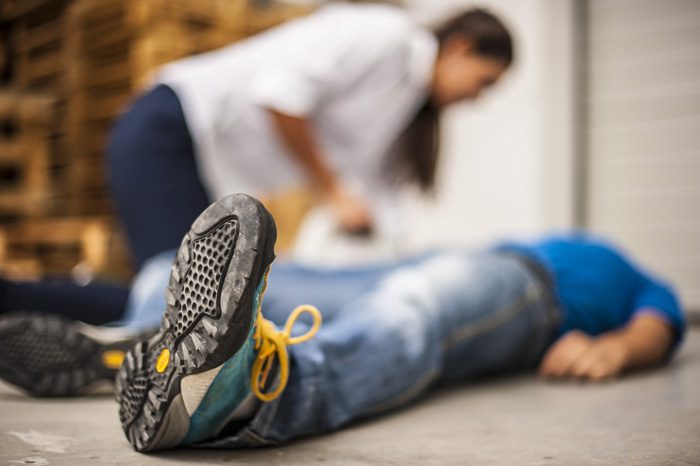How does Narcan/Naloxone work to Stop an Overdose?
 Naloxone, sold under the brand name Narcan, was developed by Jack Fishman and Mozes Lewenstien in 1961.
Naloxone, sold under the brand name Narcan, was developed by Jack Fishman and Mozes Lewenstien in 1961.
It was approved by the Food and Drug Administration in 1971, and is listed on the World Health Organization’s List of Essential Medicines under the subtitle “Antidotes and other substances used in poisonings.” It is the antidote for opioid overdose.
Narcan can be administered through a pre-filled intramuscular injection, intravenous injection, or a nasal spray. The most commonly used is the intramuscular injection into the arm or thigh with a larger type syringe that can go through clothing in emergency situations (which all are, if naloxone is being used). The dose works within minutes and lasts anywhere from 30 minutes to 90 minutes. A person who has been given a dose of naloxone should be closely observed for at least a few hours.
When someone puts an opioid such as heroin or narcotic pain killers into their system, the opioid latches on to receptors in the brain. The drug then opens and closes the receptor “lock” causing a plethora of biochemistry within that cell. This is what makes someone feel high, and eventually causes addiction. When the level of opioids is too much for the bodily system and the brain receptors to handle, the brain essentially gets flooded and shuts down breathing and the heart rate. When naloxone is administered, it latches on to the same opioid receptors, blocking the the opioid’s access to it. The process happens quickly and brings a person out of an overdose because no more opioid drug can get into these receptors in the brain.
Heroin or other opioids can last longer in the system than naloxone, and after thirty to forty-five minutes, the overdose process can continue when the opioids begin to get into the brain receptors once again as the naloxone is wearing off. This is why naloxone may not be a “one and done” dose for overdose reversal. The person must be monitored. If someone has just been given naloxone and shows no signs of improvement in breathing or blueness of lips and limbs, it can be given repeatedly every 2-3 minutes until there are signs of overdose reversal.
Another reason to keep an eye on someone who has overdosed and has been given naloxone is that it may put them into opioid withdrawal.
Signs of opioid withdrawal include:
- Profuse sweating
- Vomiting
- Diarrhea
- General uncomfortableness
- Heart attack
Medical help should always be called immediately after administering naloxone. Like any other drug a tolerance can be built up to naloxone, so it is difficult to know how much is necessary to save a life.
If you or a loved one need addiction help, contact our confidential helpline at (888) 576-0222.
References:
Naloxone Injection. MedilinePlus. Trusted Information for You. http://www.nlm.nih.gov/medlineplus/druginfo/meds
WHO Model Lists of Essential Medicines. http://www.who.int/medicines/publications/essentialmedicines/en/
BrightEdge\BEIXFClient Object
(
[connectTime:BrightEdge\BEIXFClient:private] => 66
[_get_capsule_api_url:BrightEdge\BEIXFClient:private] => https://ixfd1-api.bc0a.com/api/ixf/1.0.0/get_capsule/f00000000296879/114541674?client=php_sdk&client_version=1.5.12&base_url=https%3A%2F%2Ffairoaksrecoverycenter.com%2Fblog%2Fhow-does-narcannaloxone-work-to-stop-an-overdose%2F&orig_url=https%3A%2F%2Ffairoaksrecoverycenter.com%2Fblog%2Fhow-does-narcannaloxone-work-to-stop-an-overdose%2F&user_agent=Mozilla%2F5.0+AppleWebKit%2F537.36+%28KHTML%2C+like+Gecko%3B+compatible%3B+ClaudeBot%2F1.0%3B+%2Bclaudebot%40anthropic.com%29
[displayCapsuleUrl:BrightEdge\BEIXFClient:private] => https://ixfd1-api.bc0a.com/api/ixf/1.0.0/get_capsule/f00000000296879/114541674
[capsule:BrightEdge\BEIXFClient:private] => BrightEdge\Capsule Object
(
[accountId:protected] => f00000000296879
[publishingEngine:protected] => ixf-compiler
[dateCreated:protected] => 1.74202331023E+12
[datePublished:protected] => 1.74202331023E+12
[version:protected] => 1.0.0.0
[capsuleNodeList:protected] => Array
(
[0] => BrightEdge\Node Object
(
[type:protected] => bodystr
[dateCreated:protected] => 1.74202290392E+12
[datePublished:protected] => 1.74202331023E+12
[publishingEngine:protected] => link-block
[engineVersion:protected] => 1.0.0.0
[metaString:protected] =>
[content:protected] =>
[feature_group:protected] => body_1
[redirectType:BrightEdge\Node:private] =>
[redirectURL:BrightEdge\Node:private] =>
)
[1] => BrightEdge\Node Object
(
[type:protected] => headstr
[dateCreated:protected] => 1.74202331034E+12
[datePublished:protected] => 1.74202331023E+12
[publishingEngine:protected] => app-js
[engineVersion:protected] => 1.0.0.0
[metaString:protected] =>
[content:protected] =>
[feature_group:protected] => _head_open
[redirectType:BrightEdge\Node:private] =>
[redirectURL:BrightEdge\Node:private] =>
)
)
[configList:protected] => stdClass Object
(
)
[pageGroupNodes:protected] =>
[allPageGroupNodes:protected] =>
[pageGroup:protected] =>
)
[_capsule_response:BrightEdge\BEIXFClient:private] => {
"account_id": "f00000000296879",
"date_published": 1742023310227,
"key": "114541674",
"is_universal_capsule_enabled": "false",
"capsule_version": "1.0.0.0",
"engine_version": "1.0.0.0",
"version": 2,
"date_created": 1742023310227,
"nodes": [
{
"feature_group": "body_1",
"engine_version": "1.0.0.0",
"content": "\n",
"date_published": 1742023310227,
"date_created": 1742022903918,
"type": "bodystr",
"publishing_engine": "link-block"
},
{
"feature_group": "_head_open",
"engine_version": "1.0.0.0",
"content": "\n\n\n",
"date_published": 1742023310227,
"date_created": 1742023310335,
"type": "headstr",
"publishing_engine": "app-js"
}
],
"config": {},
"publishing_engine": "ixf-compiler"
}
[allowDirectApi:BrightEdge\BEIXFClient:private] => 1
[debugMode:BrightEdge\BEIXFClient:private] =>
[disableRedirect:BrightEdge\BEIXFClient:private] =>
[deferRedirect:BrightEdge\BEIXFClient:private] =>
[_normalized_url:BrightEdge\BEIXFClient:private] => https://fairoaksrecoverycenter.com/blog/how-does-narcannaloxone-work-to-stop-an-overdose/
[_original_url:BrightEdge\BEIXFClient:private] => https://fairoaksrecoverycenter.com/blog/how-does-narcannaloxone-work-to-stop-an-overdose/
[client_user_agent:BrightEdge\BEIXFClient:private] => Mozilla/5.0 AppleWebKit/537.36 (KHTML, like Gecko; compatible; ClaudeBot/1.0; +claudebot@anthropic.com)
[errorMessages:protected] => Array
(
)
[profileHistory:protected] => Array
(
[0] => Array
(
[0] => constructor
[1] => 66
)
[1] => Array
(
[0] => getFeatureString
[1] => 1
)
[2] => Array
(
[0] => getFeatureString
[1] => 0
)
)
[config] => Array
(
[sdk.environment] => production
[api.endpoint] => https://ixfd1-api.bc0a.com
[sdk.charset] => UTF-8
[sdk.account] => f00000000296879
[sdk.connectTimeout] => 1000
[sdk.socketTimeout] => 1000
[sdk.crawlerConnectTimeout] => 1000
[sdk.crawlerSocketTimeout] => 1000
[whitelist.parameter.list] => ixf
[forcedirectapi.parameter.list] => ixf-api|ixf
[flat.file] => true
[sdk.proxyPort] => 0
[sdk.proxyProtocol] => http
[crawler.useragents] => google|bingbot|msnbot|slurp|duckduckbot|baiduspider|yandexbot|sogou|exabot|facebot|ia_archiver|brightedge
[content.base.path] => /nas/content/live/fairoaksrecove/wp-content/themes/valley
[diagnostic.type] => full_encrypted
[diagnostic.string] => 1
[capsule.mode] => remote.prod.capsule
[page.independent] => false
)
)
 Naloxone, sold under the brand name Narcan, was developed by Jack Fishman and Mozes Lewenstien in 1961.
Naloxone, sold under the brand name Narcan, was developed by Jack Fishman and Mozes Lewenstien in 1961.

 Naloxone, sold under the brand name Narcan, was developed by Jack Fishman and Mozes Lewenstien in 1961.
Naloxone, sold under the brand name Narcan, was developed by Jack Fishman and Mozes Lewenstien in 1961.
